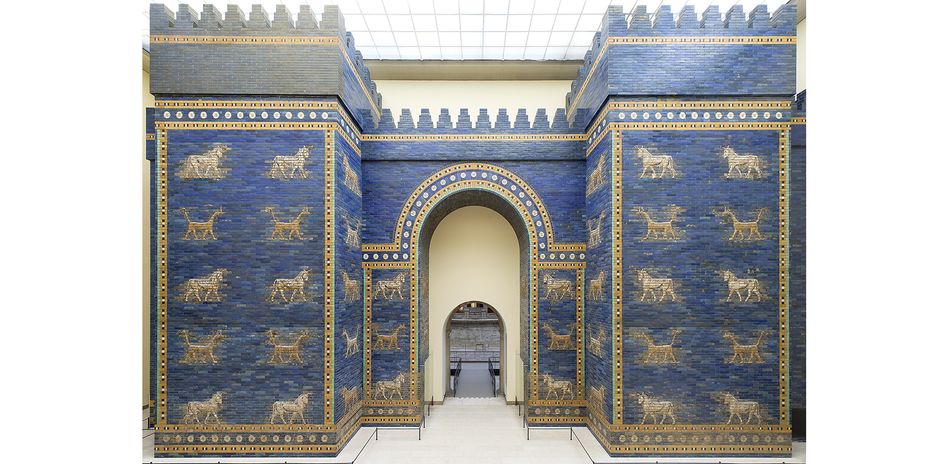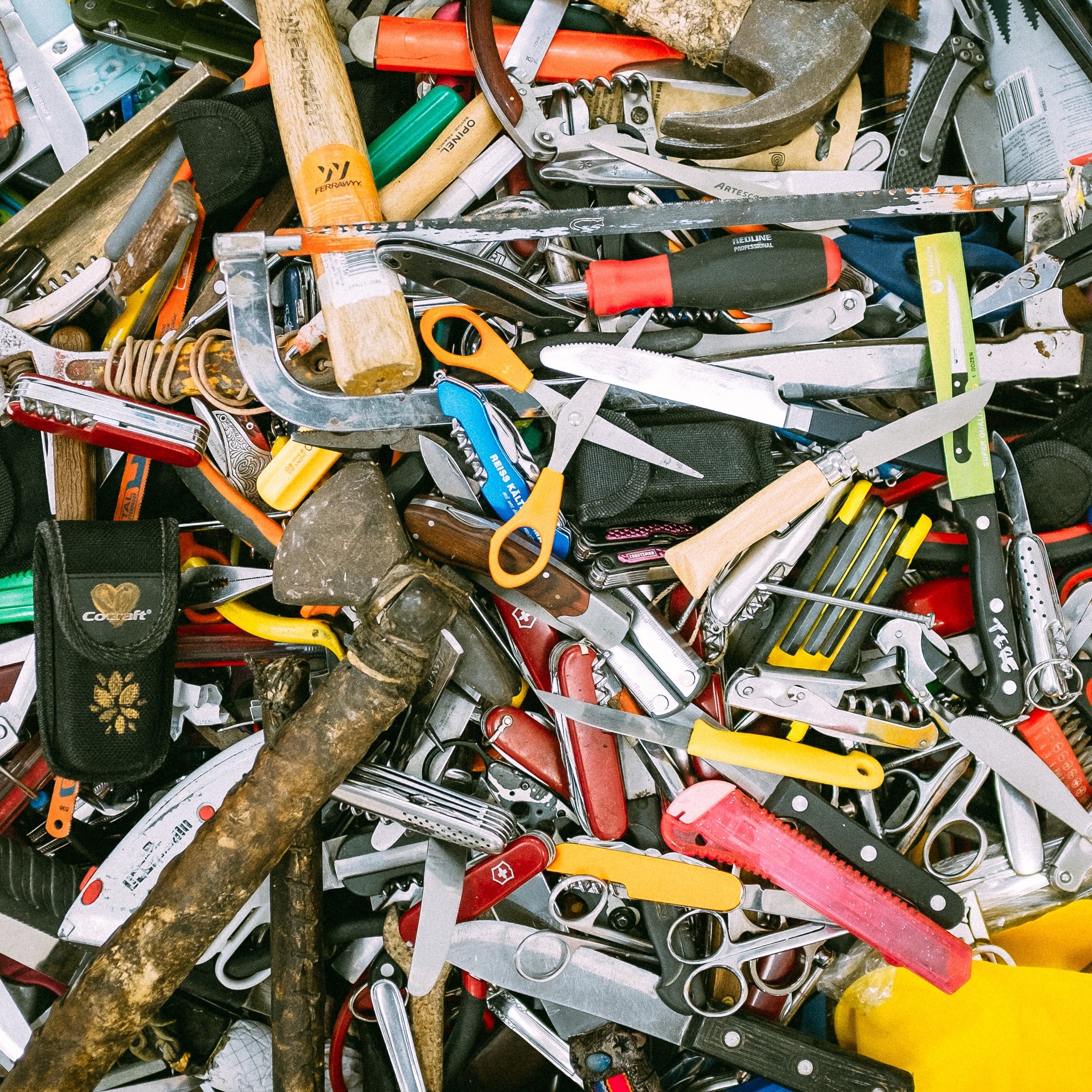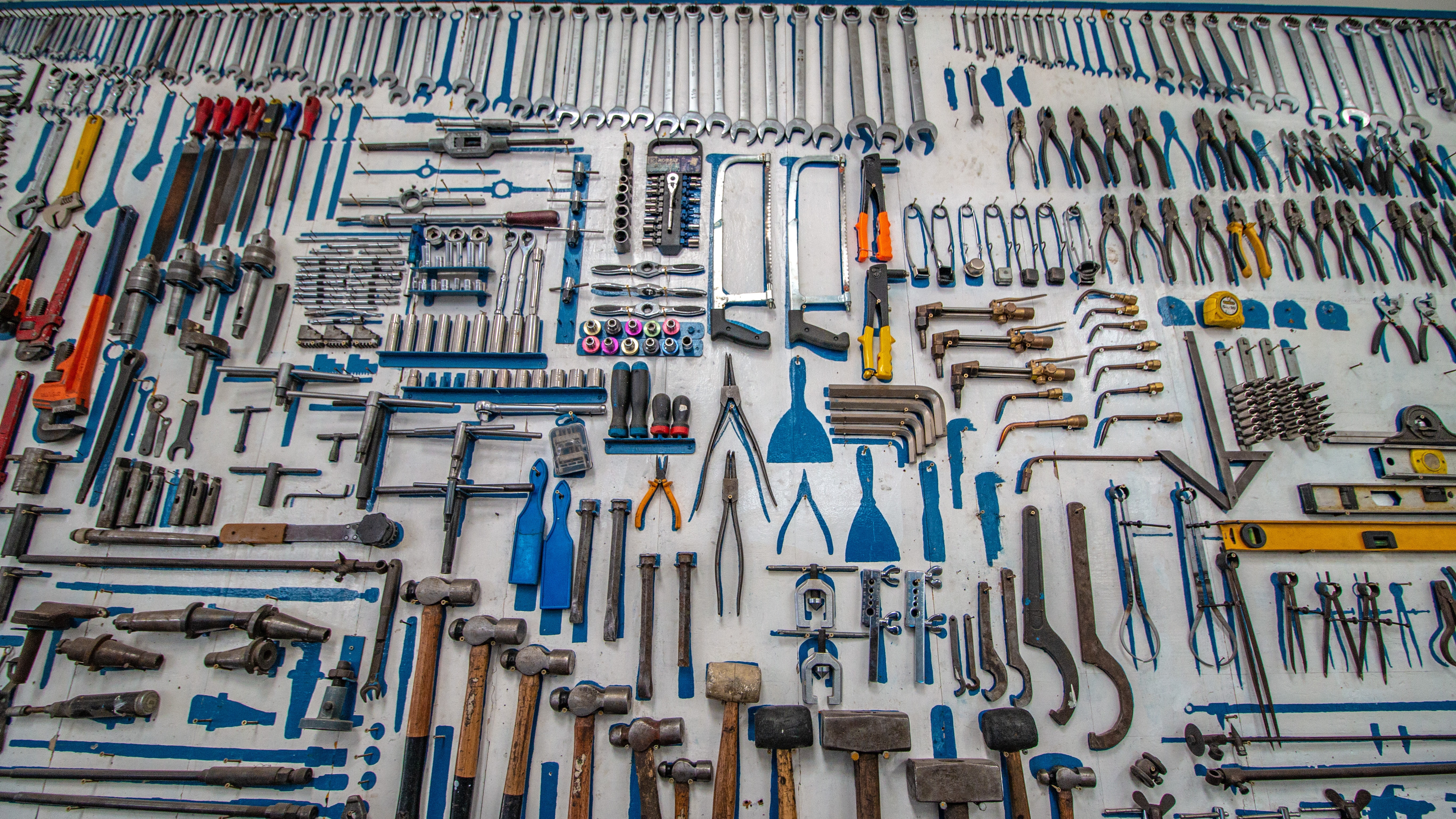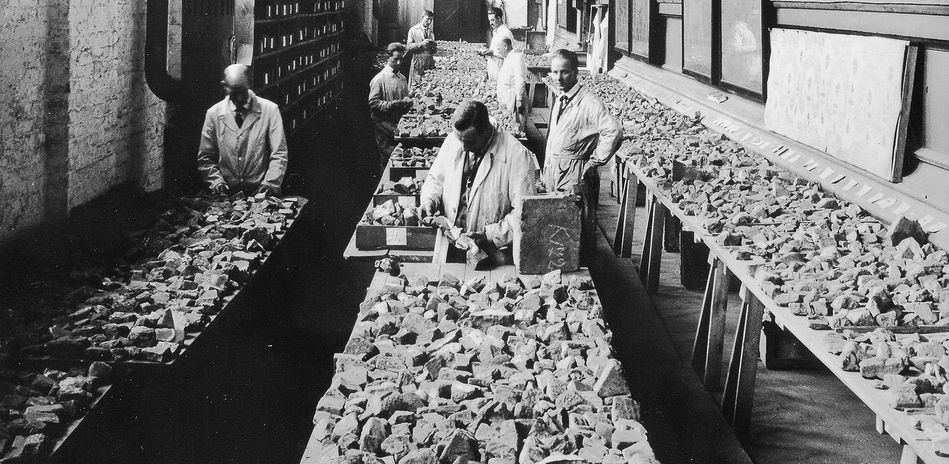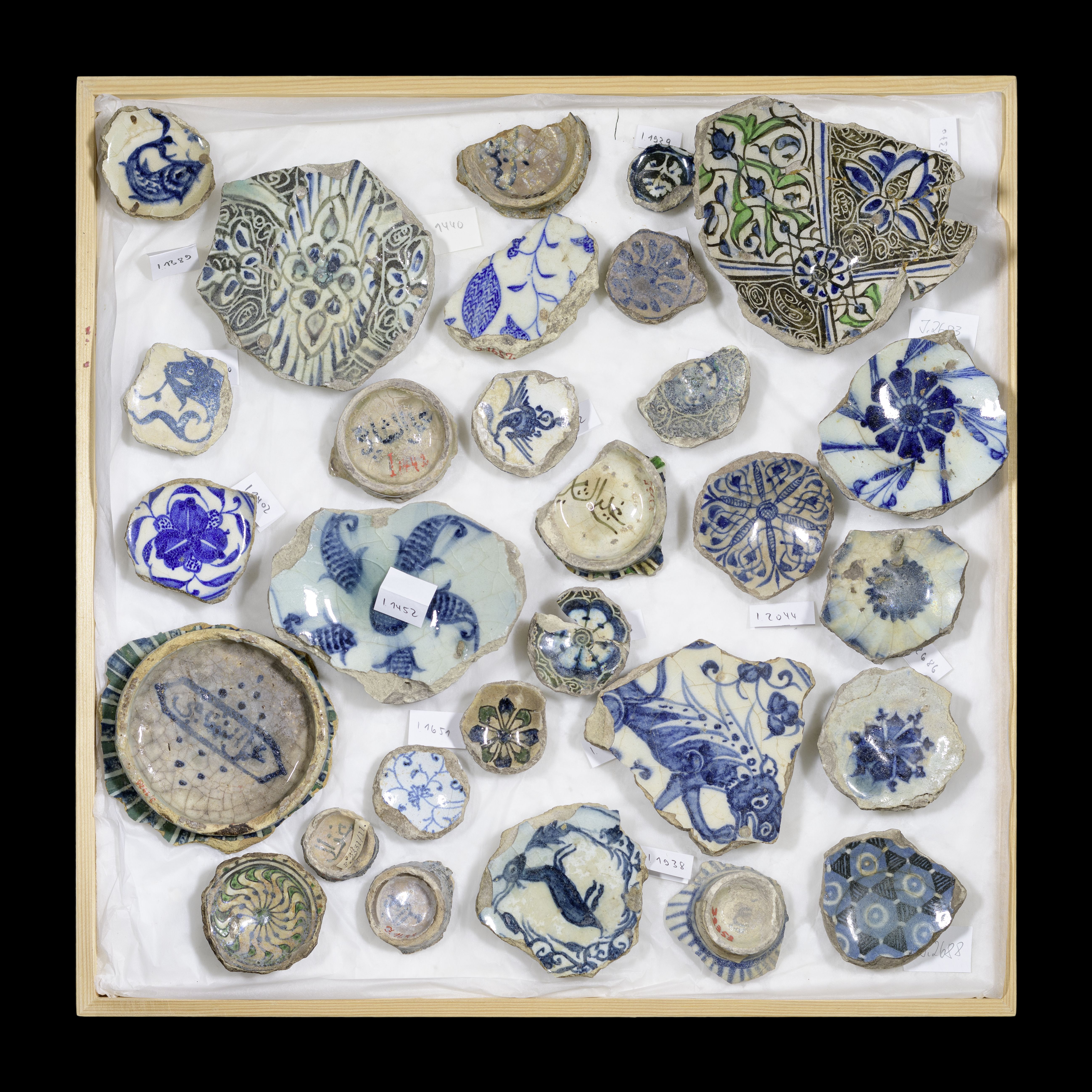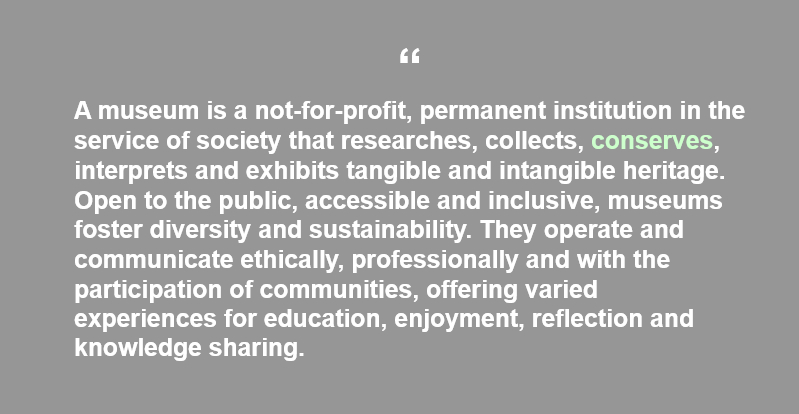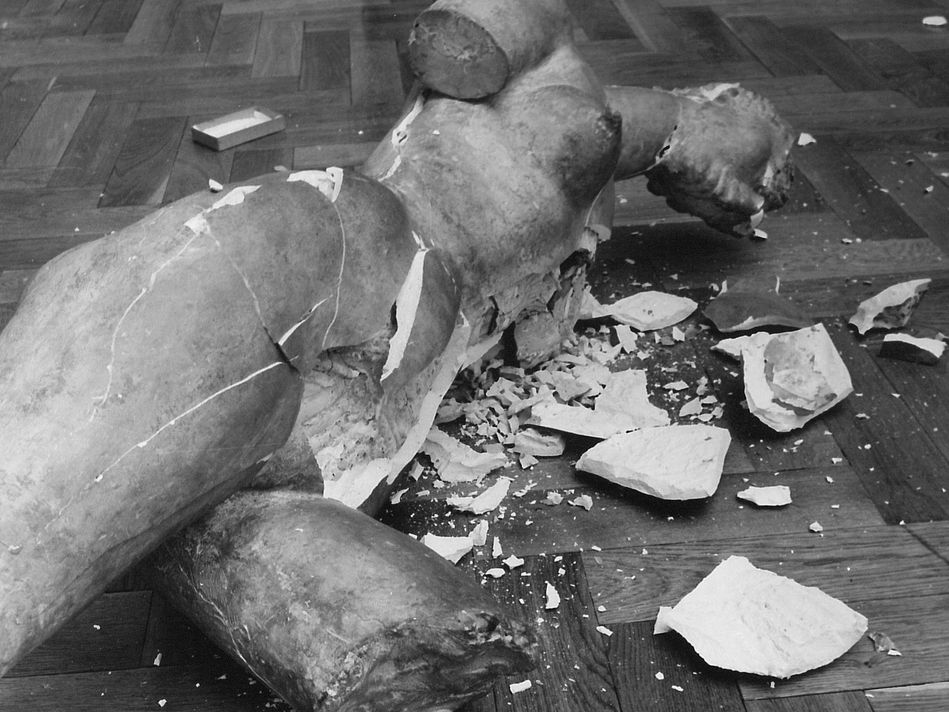en
- de
- en
This online exhibition explores issues of partition and completion, preservation and destruction, remembrance and forgetting. It was created as part of the special exhibition In:complete. Destroyed - Divided - Completed (on view at the Kunstbibliothek, Sept. 30, 2022 to Jan. 15, 2023). It combines objects from 23 museums within the Stiftung Preußischer Kulturbesitz from prehistoric times to the present.
un:protected ♦ How can museums protect their artworks from destruction? un:important ♦ What does a museum collect and how does it preserve their objects for future generations? un:known ♦ Do museums only display masterpieces and authentic testimonies of the past? un:seen ♦ When is a work of art considered "complete"? un:usable ♦ What does collecting do to objects and according to which criteria do they become parts of museums? un:forgettable ♦ How do we understand art in the age of reproduction?
Before collecting...
The cultural memory of mankind includes statues that are thousands of years old, just as it does vases from three centuries ago or pictures that were painted only last week.
But who decides what is important? And what should be kept when resources such as space or energy are limited in museum storage rooms?
... eyes open when selecting an object.
The importance of preserving cultural heritage is undisputed. With precise collection profiles, museums must choose very well what is important and what they want to collect.
Likewise, museums have a duty not to accept everything that is offered to them: when acquiring an object, the provenance of the object must always be carefully examined. No objects may be accepted that have been stolen or looted or have otherwise entered the art market illegally.
UNESCO Convention of 14 November 1970
Alphabetical list of Contracting States
Maintaining an overview...
A core task of the museum is its function as the cultural memory of humanity. For this purpose, it is important to document its collections in such a way that they become accessible to a broad public and are preserved for future generations.
As soon as an object enters a collection, it is catalogued. This means that it is included in the inventory and given a distinctive inventory number. With the inventory, the object becomes the responsibility of the museum.
... in the depots
The documentation in the museum includes the entry documentation, the inventory as well as the scientific cataloguing and indexing.
The objects that have become the property of the museum are documented in the inventory book. The basic record includes the date of acquisition, the object name with a brief description, information on previous ownership and the type of acquisition, a photograph (or a drawing), the acquisition price, if applicable, as well as the date and signature or abbreviated name of the person responsible.
The system of assigning inventory numbers differs from museum to museum, even from department to department. It is important that the objects are recorded under a (letter-number) system in such a way that they can be unequivocally assigned and easily found again.
The storage of objects in different depository rooms also follows a very specific system. In most cases, they are differentiated by the type of material: ceramics storage room, manuscript storage room, textile storage room...
Today, museums have a database system in which they enter their documentation. Here, in addition to the basic data such as place and period of origin, everything concerning the object is recorded:
The state of restoration, the storage conditions such as the required room temperature or humidity, the provenance history of the object and the literature in which it is mentioned; photographs can also be filed.
It is important to always document when the object changes its location, be it that the restorer takes it into their workshop or that the object is shown in an exhibition - this way it will not get lost!
Guidelines of the Deutscher Museumsbund
New central depository
"Does it spark joy?"
At the latest since Marie Kondo, one thinks several times about what is worth keeping...
There are many TV shows and self-help books on the subject of "tidying up" that are supposed to teach viewers and readers how to bring order into their own homes. A recurring tip is to divide items into categories, sort them by colour, arrange them in a system of different bins and label them. Very similar to what we have seen for the museum storage rooms.
When it comes to tidying up, clearing out also plays a big role. Tidying expert Marie Kondo recommends asking the question "Does it spark joy?" for each item. If not, sort it out!
The question is not applicable in the museum context, because there are many reasons why the museum preserves its objects.
... and what is not.
It is not only when selecting new objects to acquire that the museum can reflect on its collection profile. The existing collection, too, can always be reconsidered and questioned. There are good reasons to clean out!
Small museums in particular, which suffer from a lack of space, can "deaccession" objects, i.e. remove them from their collection, by tightening their profile.
In "exceptional cases and in accordance with the collection concept, it is also possible to dispose of an inventoried object" - as the Deutsche Museumsbund puts it (guidelines above). Reasons for this may be the existence of a duplicate, the exchange for a suitable object, excessive deterioration, destruction or restitution.
Why does the museum preserve its objects?
Every researcher brings new approaches
Research is constantly being questioned: each generation of scientists takes a new approach and thus arrives at new results. They should all have access to the objects in the museum.
The more researchers devote themselves to a topic, the more we learn about it. The more data that is collected and analysed, the more comprehensive the picture that emerges.
Techniques of the future
New methods are constantly being developed to generate knowledge in scientific analyses. With the C-14 method, for example, the age of objects up to 60,000 years old can be determined to within a few decades.
Who knows what future methods will be able to find out about "old things"?
The museum as memory
Our everyday culture today, which we perceive as 'quite normal', will also become an object of research for later generations... "What were they thinking...?"
Under the hashtag #CollectingCorona, the Museum Europäischer Kulturen called for people to collect everything they associate with life during the time of the Covid-19 pandemic. This way, later generations can also imagine what it meant to experience the pandemic.
What should we preserve from our present for future generations?
Preservation as a core task of the museum
There are many reasons to preserve objects in museums.
The International Council of Museums (ICOM for short) counts the preservation of tangible and intangible (cultural) heritage as part of the definition of a museum.
Each generation of museum staff passes on its responsibility to the next. This is a challenge that museum staff are constantly taking up anew.
